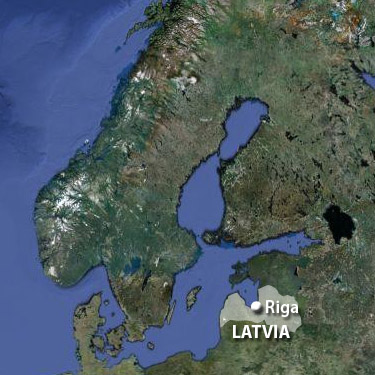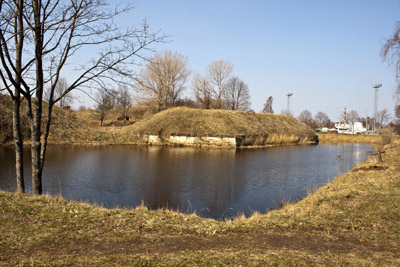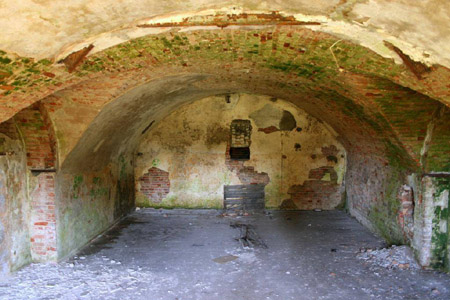 |
Daugavgriva Fortress
Riga, Latvia
|
|
 |
Cistercian monks of Pforta, Lithuanians, Livonian Knights, the Knights Templar and Poles all built, razed, fortified, besieged and destroyed various monestaries, castles and forts at the current site of Daugavgriva Fortress prior to 1608.
For it was on August 1 of 1608 that the Swedes arrived at the mouth of the Daugava River, which connects the ancient city of Riga to the gulf of the same name (which is Riga). Sweden had come to break through the Lithuanian besiegement of Riga as part of the ongoing Polish-Swedish War (1600-1611), which was fought for control of Livonia, a region along the eastern shores of the Baltic Sea (which today encompasses much of Latvia and Estonia). The Swedes built what would become the basis for the version of Daugavgriva Fortress that we see today, but were unable to break through to Riga.
|
 |
 |
|
The Battle of Daugavgriva took place on October 6, 1609: Sweden was kept out of Riga, but they weren't giving up. Another Polish-Swedish War (1621-1625) brought Riga firmly under Swedish control, making it the largest city in the Swedish Empire. Swedish General Rothenburg built the Fortress of Dünamünde in 1641, which, like everything else in this part of the world, is known by different names in sixteen different languages: For the sake of my sanity, I'll just call it Daugavgriva Fortress. By the 1680's, the fortress had been fully fortily fortified, with guns commanding the seaborne approach to Riga.
|
 Have I mentioned that starfort corners are cool? Have I mentioned that starfort corners are cool? |
 |
Wars wars and more wars bonked around eastern Europe in the 17th and 18th centuries. The Great Northern War (1700-1721), an effort by Russia and her allies to contest Sweden's supremacy in the region, brought the a Russian army under Peter the Great (1672-1725) to a plague-stricken Riga in 1710. Russia besieged and then took Riga and Daugavgriva Fortress, whose garrison was presumably too weak and buboe'd to put up much of a fight. Around half of Riga's population died of this round of the plague.
Hooray, Latvia had now begun its 269-year stretch of being part of Russia (not counting a
|
|
|
brief span betwixt the First and Second World Wars)! Daugavgriva Fortress was rebuilt by its new Russian masters, and was fakily renamed to the unlikely-sounding Ust-Dvinsk in 1893. Ust-Dvinsk served Russia well as a convenient place to imprison people.
During the First World War (1914-1918), the fort of our current interest was bombed by German Army Airship SL7...a freaking dirigible. I'm sorry, but if you have any sort of antiaircraft capability and you can't hit an airship, you cannot be trying very hard. As hilarious as this sounds, it nonetheless illustrates the end of the starfort as an effective defensive tool. Frownyface.
|
Kaiser Wilhelm II (1859-1941) personally inspected Daugavgriva Fortress after the German Army took Riga in 1917. After the war and the Russian Revolution of 1917, Latvia found itself bereft of Russian oversight, and for some reason decided to tear down much of Daugavgriva Fortress.
Happily, the Soviet Union returned in 1940 during the Second World War (1939-1945), handed Latvia over to Germany in 1941, then fought its way back in 1944. The victorious Soviets didn't leave after the war, rebuilt enough of Daugavgriva to make it a
|
 |
 Casemates are also cool. Casemates are also cool. |
|
viable place to hang out again, and garrisoned it through much of the Cold War (1945-1990).
The Russian Army remained at Daugavgriva Fortress until 1995, likely because it had nowhere else to go.
The fortress fell into private hands in 1999, but to date nothing has been done to restore it to anything approaching a state that would be safe to visit. Get to work, Daugavgrivans!
|
|
|
|
|
|
 |




